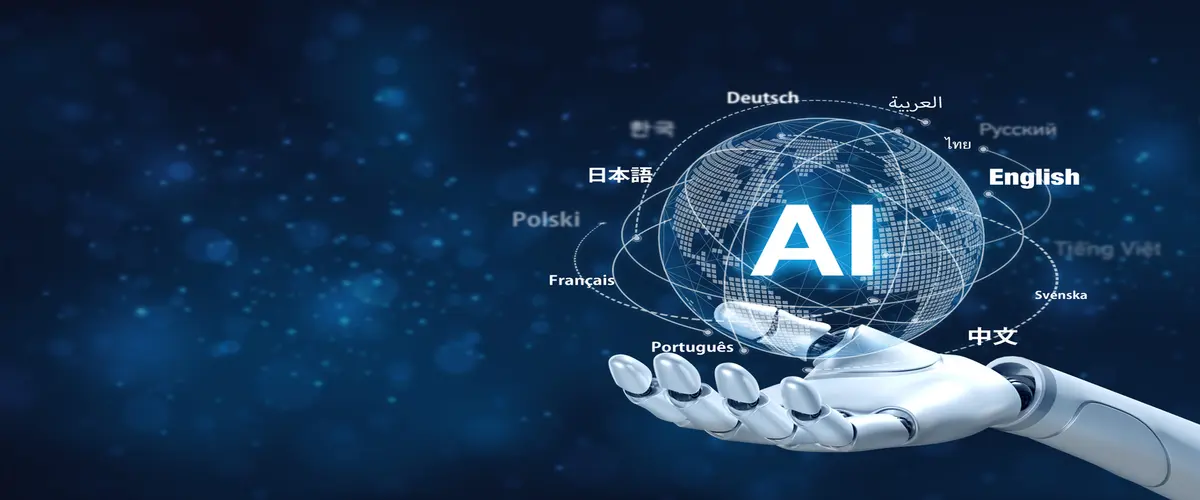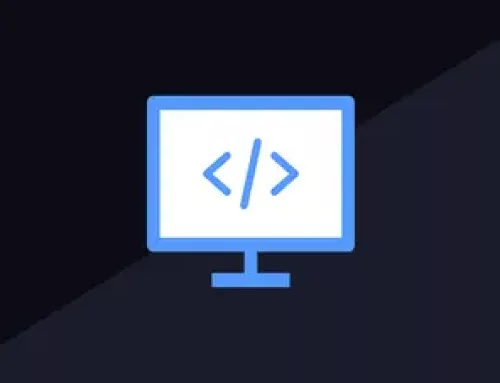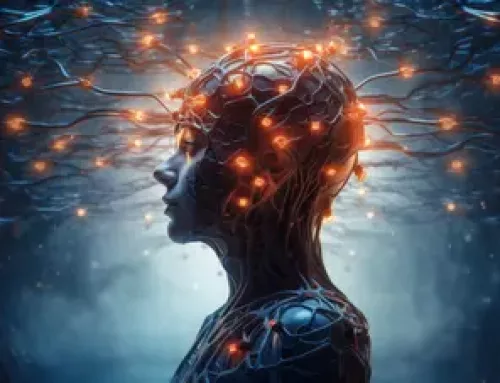
The world is getting smaller, and communication across languages is more important than ever. But with so many translation options available, how do you get the best results?
The truth is, it's not a choice between AI and human translation. It's about harnessing the strengths of both. In this article, we'll break down the advantages and limitations of artificial intelligence, revealing a powerful method for achieving outstanding quality, consistency and cost savings in your translations.
Forget the clunky robots of sci-fi movies. Today's AI is a sophisticated learning machine, analysing vast amounts of data to become a surprisingly adept language translator. But this doesn't spell doom for human translators. Instead, AI acts as a powerful partner, handling repetitive tasks with lightning speed. Human experts can then focus on the nuances AI can't grasp, ensuring your message resonates culturally and ignites the right spark, especially for multilingual website translation.
Think of a showcase site – you want visitors captivated by the elegance of your brand, not confused by a robotic translation. This is where trusting a translation agency's expertise becomes critical. They'll leverage the AI-human synergy to craft translations that are both accurate and culturally fluent, propelling your global presence to new heights.
Here's what we'll explore in this article:
- What happened before AI?
- The advantages of AI translation
- The limitations of AI translation
- The importance of human translators
- How to get the most out of AI & human translation
So, if you're a business, marketer or anyone looking to bridge language barriers, read on. We're going to show you a cutting-edge approach forward-thinking companies are using for translation—one that delivers exceptional results without breaking the bank. But first, let's step back to pre-AI times.
What happened before AI?
Before AI, the quest to bridge language barriers relied on two main trends: manual methods and automatic translation.
The first was manual methods. For centuries, people relied on dictionaries, phrasebooks, and even coded messages to translate languages. As you can imagine, these were time-consuming and often inaccurate, especially when it came to idioms and cultural references.
Then came automatic translation. The 20th century saw the dawn of machine translation, with the goal of using computers to automate the process. These early systems were often rule-based, relying on programmed grammar structures and word-for-word substitutions. This resulted in clunky, unnatural translations that frequently missed the true meaning.
The advantages of AI translation
Modern AI offers a vast array of benefits that companies can harness to project their multilingual content even further. Let's explore how AI enhances the skills of professional translators, rather than replacing them.
- Speed and efficiency: AI processes massive text volumes in real-time, churning out translations at lightning speed – a vast improvement over manual methods or older machine translation systems.
- Cost-effectiveness: For basic translations of high-volume content like websites or documents, AI offers a more cost-effective solution compared to purely human translators.
- Power of Translation Memories: AI and translation memories work hand-in-hand. A translation memory (TM) is a database that stores previously translated segments of text. When a new project contains similar phrases, the AI engine can leverage the TM to automatically populate the translation, saving time and ensuring consistency. This synergy between AI's speed and the human expertise stored in TMs is a major advantage for professional translation services.
- Accuracy and fluency: AI translation engines are constantly learning and improving, thanks to advanced algorithms and vast datasets. This leads to more natural-sounding translations that are closer to human-generated ones.
The limitations of AI translation
While AI is a powerful tool, it's important to be aware of its limitations. For crucial projects or content requiring finesse and cultural understanding, human expertise remains irreplaceable. Consider these challenges of AI translation.
- Nuance and context: AI can struggle with the subtleties of language, like sarcasm, humour or cultural references. A literal translation might miss the intended meaning or even offend.
- Limited creativity: AI translations can sound robotic and lack the creativity or adaptability of a human translator. They might struggle to capture the desired tone or style for specific content.
- Understanding complexities: Languages with complex grammar structures or rare languages with limited data might pose challenges for AI. The translations might be grammatically incorrect or lack fluency.
- Focus on accuracy, not emotion: AI excels at accuracy but struggles with conveying emotions or the intended impact of the message. A human translator can adapt the language to evoke the desired feeling in the reader. Unlike a human, AI isn't skilled in providing transcreation services or localisation that requires nuance.
- Data bias: AI translation models are trained on massive datasets of text and code. If this data contains biases, the translations might reflect those biases unintentionally.
- Lack of precision: AI translation tools struggle to identify and translate the precise vocabulary (lexical field) crucial for SEO translation in a specific industry, along with analysing the actual search queries used by the target market.
Why you should include human translators in the process
Workflows that marry AI translation with the precision of human translators are the new benchmark in translation and content localisation processes.
Here's why human translators remain essential:
- Nuance and cultural understanding: AI excels at processing large amounts of data, but it often struggles with the subtleties of language. Being native speakers of the target language, human translators possess a deep understanding of cultural nuances and your brand values. This ensures the translated message resonates with the target audience and avoids unintended offence.
- Creativity and tone: AI translations can sometimes sound robotic or lack the desired tone. Human translators can inject creativity and adapt the language to suit the specific context, whether it's a formal business document, a marketing campaign or a humorous blog post.
- Subject matter expertise: For specialised fields like legal documents, medical reports, or technical manuals, a human translator with specific domain knowledge is essential. They can accurately translate complex terminology and ensure the translated content is factually correct.
- Quality control and proofreading: While AI translation is improving, it's not perfect. Human translators can act as a quality control check, identifying and correcting errors, ensuring the final product is polished and error-free.
How to get the most out of AI and human translation
So, how do you leverage the advantages of both AI and human translation to achieve exceptional quality while keeping costs in check?
Introducing the H-AI-BRID method. An alchemy of human content localisation and Artificial Intelligence designed by Milega to internationalise your content, improve SEO translation, boost customer engagement and increase your sales.
This method, designed for medium to large-scale content, is ideal for website translation (e-commerce sites), software, SaaS, technical documentation and any other digital content you might have.
The H-AI-BRID system leverages a secure Google Cloud environment, integrating several language models (LLMs) and machine translation tools for enhanced accuracy and power. It's also compatible with popular CMS platforms like BigCommerce, Shopify, Magento, WordPress and more.
The H-AI-BRID method in action
There are 4 steps involved in the H-AI-BRID method. Here's a breakdown.
1. Content audit
- Identifying your strategic content (top 20%) and secondary content (remaining 80%).
- Providing an initial cost estimate.
- Checking SEO relevance and cultural fit using tools like Screaming Frog and Ahrefs.
- Recommending the best technical solution for your CMS.
2. Strategy and set up
- Creating an industry-specific glossary using your terminology.
- Performing multilingual SEO keyword research with tools like Ahrefs and Keyword Planner.
- Incorporating your brief and branding guidelines.
- Providing technical support for content export for translation.
- Confirming all elements with your local teams.
As part of this strategy, human translation is used for the top 20% of your content, focusing on high-performing content that drives sales and visibility.
For the remaining content, SEO-enhanced machine translation is used, supported by a detailed glossary, optimising impact and efficiency for international business growth.
3. Localisation, translation and enhanced AI
At this stage, your strategic and secondary content are split into two groups:
For strategic content, our expert translators and copywriters will ensure your message resonates with your target audience. We'll transcreate your content and implement your keywords, glossaries, and terminology, and maintain your brand's voice and impact across all languages.
For secondary content, we use advanced neural Al translation that's enhanced with your glossary, SEO keywords, and a translation memory from your primary content. As a result, we can deliver cohesive, high-quality translations quickly.
4. Testing and future content
Once translations are integrated into your CMS, the system undergoes testing. We also offer ongoing support with content, such as:
- Blog transcreation services
- Customer case translations
- New app content localisation
- Social media content translation
- Translation of Google Ads and banners
The benefits are undeniable. You can expect:
- 60% reduction in translation costs compared to traditional methods
- 50% reduction in implementation time
- 70% increase in conversion rates compared to automated solutions
Why choose H-AI-BRID over traditional AI?
H-AI-BRID offers superior accuracy and cultural relevance compared to traditional machine translation. It's faster and more cost-effective than word-by-word translation methods, maximising the impact of your content using an optimised approach.
By embracing both AI and human expertise, you can stay ahead of the curve, connecting with global audiences when, where and how you need to.
Getting started is easy!
We offer a free business audit to kick things off. Or simply share your project details to request a quote, and we'll handle the rest.
What are you waiting for? Get in touch with us today.






